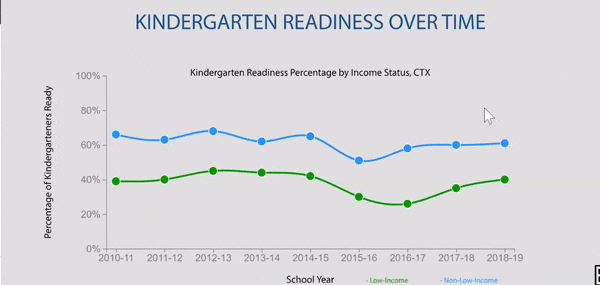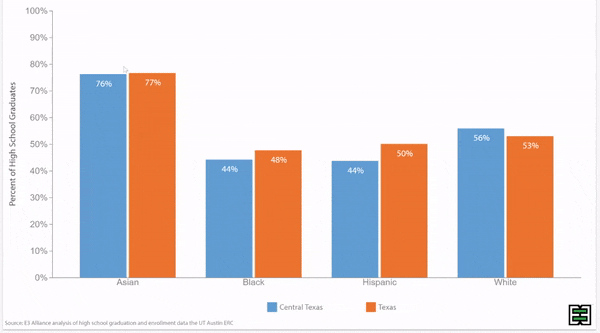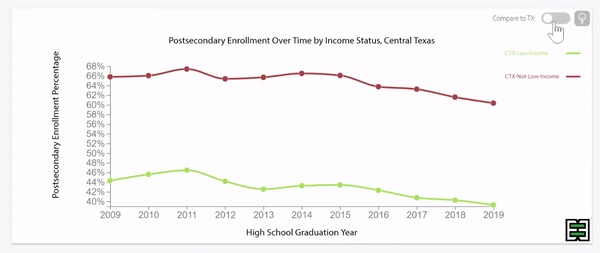Pre-Kindergarten Utilization
The importance of early childhood education and its impacts on later student outcomes presents a dual agenda for the state and region: the need to support public pre-K and improve the quality and consistency of pre-K instructional practice by providers to ensure children gain the greatest benefits.
The Texas legislature has already made important progress to ensure that all eligible four-year-olds have access to full-day pre-K, but our state can accomplish more to increase the quality of public pre-K. Lowering staff-to-student ratios can galvanize the outcomes we all desire. Better outreach to ensure that students enroll in and consistently attend pre-K ensures that communities who have been historically excluded from education systems in Texas receive the supports they need to be successful in their academic journey. Examining data can help identify trends and improve equitable pre-K access and attendance.
For more information about this data, please click here.
More Capacity and Outreach is Needed to Ensure Eligible Students Have Access to Attend Pre-K 3
This bar chart shows the percent of students who enrolled in public pre-K 3 and pre-K 4 from the total number of eligible students for specific regions in Texas and Texas as a whole.
About this data:
The following data are public pre-K utilization rates retrospectively collected at the time of kindergarten enrollment. This lagging data reflect whether a student attended pre-K one year (referred here as pre-K 4 at age 4) and/or two years (referred here as pre-K 3 at age 3) prior to their kindergarten enrollment.
Based on the available data, E3 Alliance defines public pre-K eligibility as it is reported as part of students’ school records. In the charts below, students are counted as eligible for public pre-K if the student comes from a low-income household and/or a student is determined to have emergent bilingual status at the time of kindergarten enrollment. This definition does not capture every student who might be eligible for public pre-K, but it is used as a proxy to most closely measure eligibly from the available data.
For more information about E3’s public pre-k eligibility, please visit our website
here.
Important Notes:
E3 Alliance relies primarily on data from the University of Texas Education Research Center (ERC). There is a delay in data availability due to state approval within the ERC and analysis time. This data pertains to students from within the state of Texas who are eligible for and/or attend public pre-K. Additionally, this data allows for a longitudinal understanding of pre-K eligibility and attendance.



